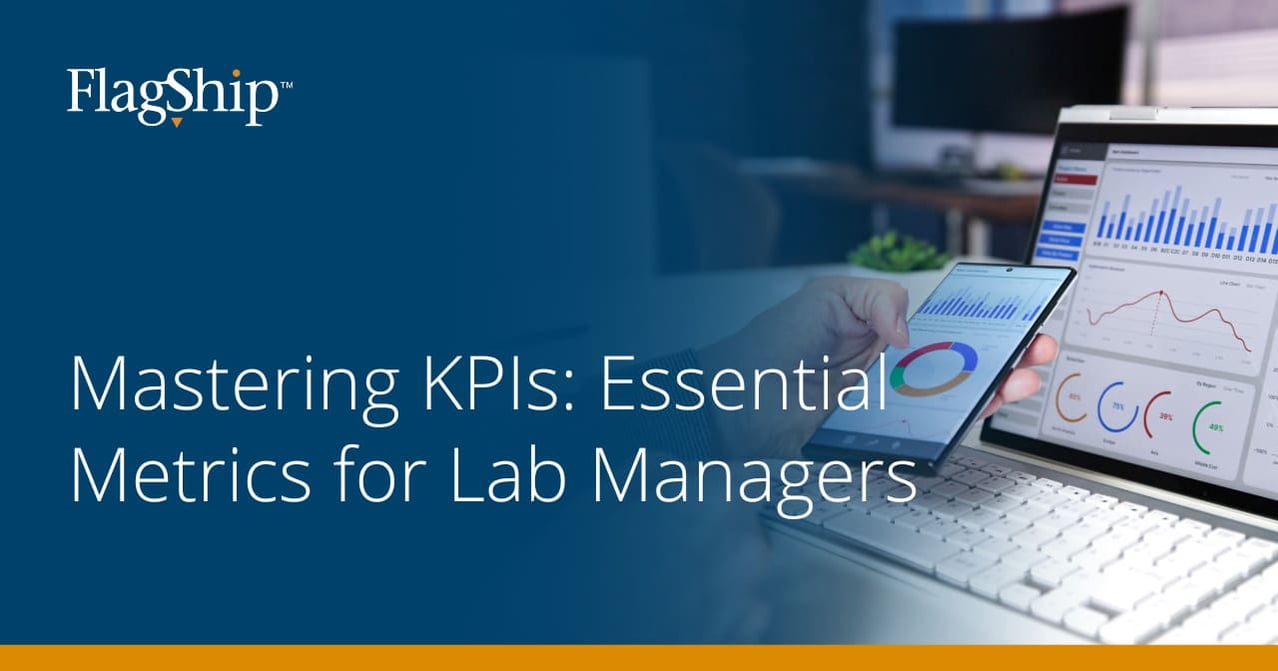
Operational efficiency is a critical challenge for lab managers in the Life Sciences industry, which requires the management of complex data, equipment, and teams under cost and time pressures. Key Performance Indicators (KPIs) are essential in this context, offering metrics by which to identify inefficiencies, optimize processes, and improve performance.
However, selecting and implementing the right KPIs presents its own challenge, especially for early-stage companies with limited historical data, evolving operational frameworks, and resource constraints. These companies require a flexible approach that can adapt to sudden changes in strategy, project focus, and market dynamics.
In this blog post, we’ll discuss the pivotal role of KPIs in lab management and provide tips for harnessing their power to enhance performance and drive success in your lab.
The Vital Role of KPIs
KPIs are quantifiable measures used to evaluate the success of an organization in achieving key objectives. They enable lab managers to assess performance against set benchmarks to understand whether they’re on track to fulfill their operational and scientific goals.
By creating a focused framework for assessing performance and monitoring progress, lab managers can identify the strengths and weaknesses of their lab operations to drive decision-making and continuous improvement.
Through this systematic approach, labs can enhance their operational performance to support their organization’s broader objectives in research, development, and quality control.
Top KPIs for Lab Managers
 For lab managers aiming to optimize their lab operations, selecting the right KPIs is crucial. Among the myriad of possible metrics, certain KPIs stand out for their ability to provide insight into the lab’s efficiency, productivity, and output quality.
For lab managers aiming to optimize their lab operations, selecting the right KPIs is crucial. Among the myriad of possible metrics, certain KPIs stand out for their ability to provide insight into the lab’s efficiency, productivity, and output quality.
Some of the top KPIs for lab managers include:
- Turnaround Time (TAT): Measures the time taken from receiving a sample to delivering the test results, indicating the lab’s efficiency.
- Test Accuracy Rate: Assesses the correctness of test results, reflecting the quality and reliability of lab analyses.
- Equipment Utilization Rate: Evaluates how effectively the lab’s instruments and equipment are being used, highlighting potential areas for optimization.
- Inventory Turnover: Measures the rate at which inventory is used and replenished, providing insight into supply chain efficiency.
- Sample Throughput: Tracks the number of samples processed in a given period, illustrating the lab's capacity and productivity.
- Cost per Test: Calculates the cost associated with each test conducted, helping in financial management and budgeting.
- Employee Productivity: Measures the output of lab staff, indicating the efficiency and effectiveness of the team.
- Compliance Rates: Tracks adherence to regulatory and quality standards, essential for maintaining lab accreditation and trust.
These KPIs can help lab managers assess various aspects of lab performance, from operational efficiency to financial management and regulatory compliance. For early-stage companies, this holistic approach is key to establishing and maintaining success.
Overcoming Common Challenges in KPI Implementation
One of the primary hurdles in setting up and managing KPIs is identifying relevant metrics that align with the lab’s objectives. This selection process is complicated by the dynamic nature of lab work, as priorities and goals can change suddenly in response to discoveries, technological advancements, and market shifts.
Furthermore, collecting and analyzing data can be daunting, especially for labs lacking a robust IT infrastructure or data management capabilities. This often leads to issues with data accuracy, consistency, and timeliness, which can undermine the effectiveness of KPI tracking.
To overcome these challenges, labs can adopt several strategies.
Create a Culture of Continuous Improvement

Establishing a culture of continuous improvement is imperative to the success of an organization’s KPI initiatives. Staff should be encouraged to regularly review and update KPIs in line with evolving goals and challenges. Regular training and development sessions can also equip staff with the skills necessary to use KPIs effectively in their work and ensure that the entire team is aligned and working toward common objectives.
Ask the Experts
Hiring staff with experience in data analysis and performance management can provide the expertise needed to select appropriate KPIs and ensure accurate data collection and analysis. These professionals can also help interpret data and make improvements based on the insights gained.
Moreover, investing in automated systems and software solutions can streamline data collection and analysis, reducing errors and freeing up staff to focus on more strategic tasks. Automation tools can provide real-time monitoring and reporting of KPIs, making it easier for managers to track progress and make informed decisions.
At Flagship Lab Services, we rely on a unique combination of highly trained people, robust processes, and advanced data analytics to optimize your lab operations.
Our cutting-edge technology streamlines data management while our lab technicians expertly handle and report on your operations, allowing your scientists to remain focused on their important research.;
Plus, we offer scalable solutions to support your company through every stage of its growth.
For more information on Flagship Lab Services, visit our lab support services page.





Leave a Comment